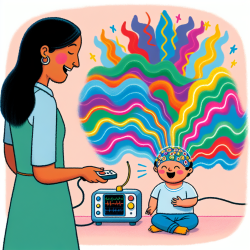Introduction to COG6-CDG and Its Implications for Speech Therapy
The recent study titled The Swedish COG6-CDG Experience and a Comprehensive Literature Review provides valuable insights into the rare genetic disorder known as Conserved Oligomeric Golgi complex subunit 6-congenital disorders of glycosylation (COG6-CDG). This disorder is characterized by a range of clinical symptoms, including intellectual disability, Attention Deficit/Hyperactivity Disorder (ADHD), and delayed brain myelinization, which can significantly impact a child's communication abilities.
Understanding the Research Findings
The study, conducted by Xia et al., presents the first two Swedish cases of COG6-CDG and highlights the genetic variants responsible for the disorder. The researchers identified compound heterozygous variants in COG6, leading to slower anterograde and retrograde ER-Golgi transport in patient cells. This finding underscores the importance of understanding the molecular mechanisms underlying congenital disorders, as they can directly affect neurological development and, consequently, speech and language skills.
Implications for Speech-Language Pathologists
For speech-language pathologists (SLPs), the insights from this study emphasize the need for a comprehensive approach when working with children diagnosed with COG6-CDG. Here are some strategies to consider:
- Early Intervention: Given the progressive nature of COG6-CDG, early intervention is crucial. SLPs should collaborate with medical professionals to ensure timely diagnosis and tailored therapy plans.
- Multidisciplinary Collaboration: Working alongside neurologists, geneticists, and occupational therapists can provide a holistic understanding of each child's unique needs, leading to more effective interventions.
- Data-Driven Approaches: Utilizing data from genetic and clinical assessments can help SLPs tailor therapy sessions to address specific deficits in communication skills.
Encouraging Further Research
While this study provides a foundational understanding of COG6-CDG, further research is needed to explore the full spectrum of its impact on speech and language development. Practitioners are encouraged to engage in or support ongoing research efforts to refine therapeutic approaches and improve outcomes for affected children.
Conclusion
The findings from the Swedish COG6-CDG study offer valuable insights for speech-language pathologists aiming to enhance therapeutic outcomes for children with this rare disorder. By integrating data-driven strategies and collaborating with multidisciplinary teams, SLPs can make significant strides in supporting the communication development of children with COG6-CDG.
To read the original research paper, please follow this link: The Swedish COG6-CDG experience and a comprehensive literature review.










